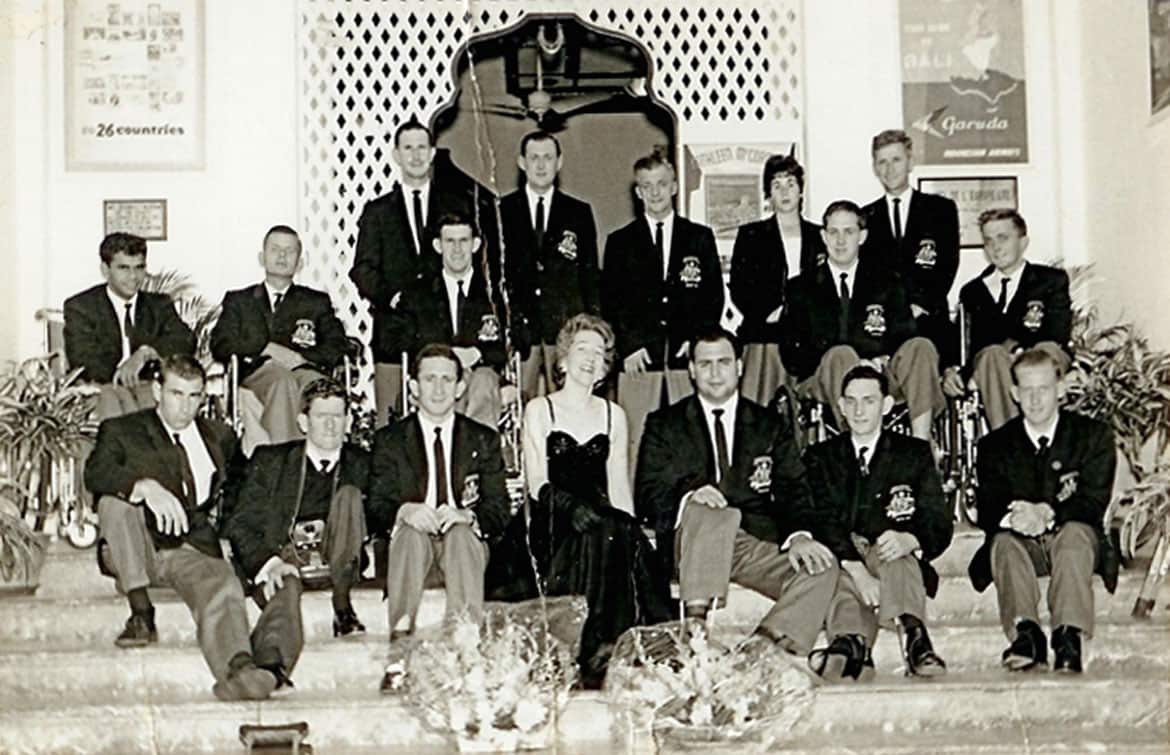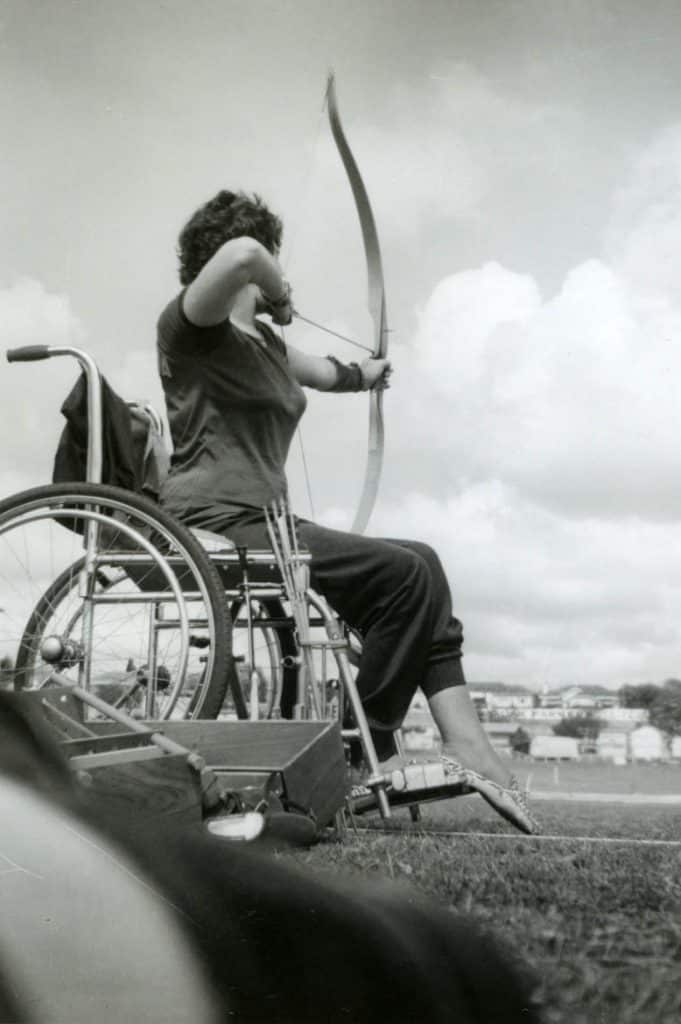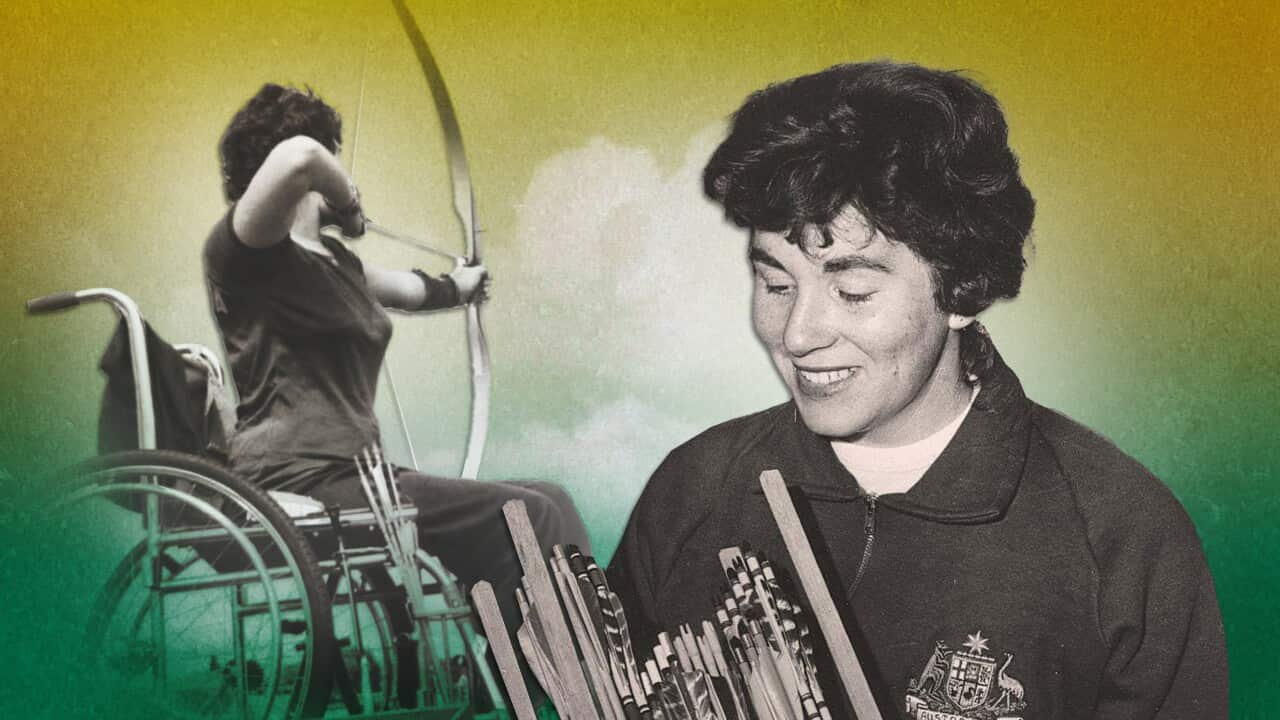Daphne Ceeney was the only woman on Australia’s first-ever Paralympics team.
At age 26, she won six of Australia’s 10 medals at the inaugural Paralympics in Rome in 1960.
She would go on to win eight more Paralympic medals across the Tokyo and Tel Aviv Games in 1964 and 1968 as well as a remarkable 13 medals at the 1966 Commonwealth Paralympic Games in Jamaica.
The Paralympics were very different to what they are now and many athletes were encouraged to compete in multiple sports.
Members of the Australian Paralympic Team at the 1960 Paralympic Games. Credit: Paralympic Stories
Ceeney and the 11 Australian men who went to Rome only took one wheelchair each and unlike athletes now they used it for multiple sports and everyday life.
This is the story of how a country girl became a Paralympic prodigy and a pioneer for women in sport.
Daphne Ceeney’s introduction to sport
Ceeney was born in 1934 in Harden, NSW.
She broke her back in a horseriding accident in 1951 and became a paraplegic, meaning her lower body was paralysed.
Ceeney said in a 2010 interview that doctors “left her to die” after her accident. She stayed in hospital for 10 months and wasn’t told she would never walk again until months after her injury.
She was offered minor physiotherapy and described life as very difficult in a house and town that had no modifications for wheelchairs.
It wasn’t until 1959, eight years after the accident, that she visited a Sydney rehabilitation clinic and was introduced to swimming and wheelchair sports.
Paralympics debut
Ceeney, like the other Australians, had to fundraise ahead of the trip to Rome for the first Paralympic Games.
It wasn’t clear how much support the event would get and whether it would ever run again.
Daphney Ceeney won bronze and silver medals in archery.
In the pool, Ceeney won gold in the 50-metre freestyle and breaststroke events.
She won silver in archery, club throw and javelin and a bronze medal in shot put.
Ceeney said the Games represented her first trip overseas, and the first time she had not been treated like a “second-rate citizen” since her accident.
“I found it very difficult when I came home to Harden. People would cross to the other side of the road in preference of coming over and talking to me. They just ignored me completely. So for me, sport was good from the point of view that I was acknowledged as a person again”.
Parasports were understood primarily as something interesting to do as part of spinal injury rehabilitation but the Rome Games changed people’s perceptions and showed disability sports could be just as competitive and athletic.
1964 and 1968 Paralympics
Ceeney came back from Rome inspired to do even better and started a rigorous training regime before and after work each day.
The Tokyo Paralympic Games in 1964 were the first to run simultaneously with the Olympics.
Ceeney won gold in doubles table tennis, silver and bronze in two different freestyle swimming events, and bronze in archery and fencing.
A year after marrying Frank Hilton and changing her name to Daphne Hilton, she headed to the Tel Aviv Paralympics in 1968.
She won silver in the 50-metre freestyle swimming and bronze in the 60-metre wheelchair sprint and pentathlon, taking her medal tally to a record 14 medals in three Games.
Ceeney retired from Parasports and in 1970 became the first paraplegic woman to give birth in Australia — she had twin girls.
Ceeney died aged 82 in 2016 and several months later was posthumously inducted into the Australian Paralympic Hall of Fame.
Australia’s first Paralympics
At this year’s Paris Paralympics 4,400 athletes from 184 nations will compete, including 160 Australians.
In 1960 only 400 athletes from 23 countries competed.
Only wheelchair athletes were invited — with amputee, deaf and blind athletes included in the 1976 edition in Toronto, Canada.
Australia’s first Indigenous Paralympian Kevin Coombs was on the wheelchair basketball team, before going on to compete at another four Games.


